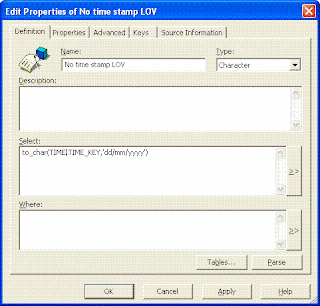Apparently you can get from the Auditor some Meta data information.
There are few drawbacks for this deal that makes the whole approach limited but for specific tests, general estimations and searches it can be most efficient.
First, what are the drawbacks?
1. The SQL data is documented but only for reports that have been edited through the query panel
if we are relating to Deski only then you can use the Rubik's cube as well.
therfore the result you will get won't be a full one.
Imagine we wouldn't have this drawback; we could make a full impact analysis on the reports.
2. This is more a basic line of the Auditor capabilities:
Auditor is only documenting live reports that have been activated during the audit, 'sleepy' reports, quarterly reports and reports that are used for single time purpose will not appear in the results, as we said it is a build in feature.
The data curve is simple:
The more you use Auditor and the more reports are being edited the more data you will get...
What reports can you write?
1. Reports Impact analysis:
This report can show you the report name, it's SQL ,it's owner and location in the repository.
By using the 'LIKE' operator we can make a search on the SQL field and ask questions like:
Which report is using a specific table, join, alias, SQL function, select clause, where clause...
2. Report select object:
This report will show you the result objects of the report.
You can ask questions like:
Are there objects that appear in different universes?
If I am about to change an object, which reports will be effected?
you have located an error in a calculated object, you want to
Locate the reports and their users in order to alert the users about this...
You can also write a complementary SDK script that will just perform the 'edit' function in all the reports in the repository,
By doing that you will achieve a much higher result of impact analysis and of course, if your company or organization can't afford a Third party tool, then script can do the job.
There are other ways how to achieve Impact analysis without buying any tools,on that i will discuss in a separate post.





